Few things can ruin a home faster than the impact of damp, causing significant health problems for residents and creating a situation that costs a lot of money to resolve. However, if you act quickly, and decisively, you can resolve and present damp problems at an affordable price.
At DryCore, we understand the devastation dampness can cause, but we also know the most effective ways to manage and remove this problem. We can even help you prevent damp.
We’ll provide you with a damp proofing cost guide that offers a baseline for determining how much does damp proofing costs, what additional costs you need to consider, and the benefits and value of damp proofing, helping you decide what damp proofing solution is best for you.
With damp proofing installed, your home, be it a flat, terraced house, or detached house, will be happier and healthier.
Given that each firm charges its own rates, and each damp proofing project has a unique element to it, it is impossible to provide a definitive costing for damp proofing work without a professional examining the issue. When you commit to damp proofing work, arrange for professionals to visit your property and provide you with a tailored quote for the work.
However, it is helpful to have average damp proofing costs to consider, and the following information is provided by Checkatrade, who reference My Build Estimate, a company monitored by the Royal Institution of Chartered Surveyors (RICS):
Checkatrade attempts to consider many of the factors involved with a full damp proofing service, excluding additional services such as removal or repair of render, decorating, drying out property, and work on skirting boards, and state they see average damp proofing prices, as of the summer of 2023, stands at £850.
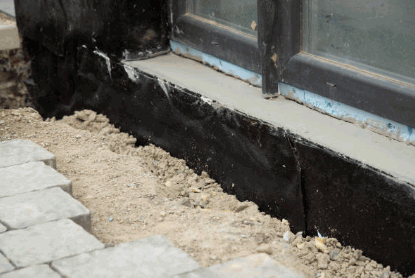
It is important to realise there is a lot of work involved with damp proofing. The number of activities, and requirements to work quickly and effectively, not to mention the benefits of successfully damp proofing a property, helps to justify the cost of resolving damp problems.
When damp proofing your home, think about the following aspects.
Before implementing any damp proofing measures, a thorough assessment and inspection of the property are necessary. Qualified professionals will examine the building for signs of existing damp, such as damp patches, peeling paint, unpleasant dark patches, mould growth, musty odours, and nasty smells, or visible water ingress.
They will also identify potential causes and sources of moisture, such as faulty plumbing, leaks, poor ventilation, or rising damp. If you have a damp course installed, a good professional will review this to determine whether it needs to be replaced.
Based on the assessment, the appropriate damp proofing method is chosen. Several techniques can be employed depending on the specific type of dampness and the extent of the problem. Common methods include:
A damp proof course is typically used in buildings with rising damp, where groundwater rises through porous materials like bricks and mortar. A physical barrier, often a damp proof membrane or chemical injection, is installed horizontally near the base of the affected walls to prevent moisture from rising further. For more information, you can check out our posts "What Is A Damp Proof Course" and "How Long Does A Damp Proof Course Last".
Tanking is primarily used in below-ground areas, such as basements or cellars, to protect against groundwater penetration. It involves applying a waterproof coating or membrane to the walls and floors, creating a barrier against moisture ingress.
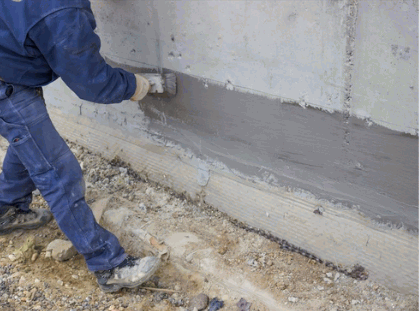
Cavity walls have a gap (cavity) between the inner and outer layers of brickwork. If this wall cavity becomes damp, it can cause issues. Cavity wall insulation involves injecting insulation material into the cavity, which helps prevent moisture from entering and improves thermal efficiency.
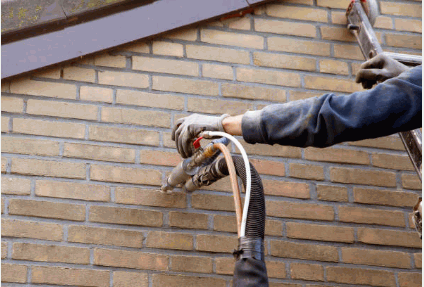
Surface treatments, such as waterproof coatings, paints, or sealants, are applied to the internal or external surfaces of walls to repel moisture and prevent dampness from occurring.
Damp proof work can involve necessary repairs and maintenance to rectify any existing damage caused by moisture. This could include fixing leaky pipes, repairing damaged roof tiles or gutters, improving ventilation systems, or addressing structural issues that contribute to dampness.
Proper ventilation is vital in damp proof strategies. Adequate air circulation helps prevent condensation, which is a common cause of dampness. Installing or improving ventilation systems, such as extractor fans, air vents, or dehumidifiers, can effectively control moisture levels within a building.
The type of damp proofing you need impacts the overall damp proofing cost.
Condensation is a common form of dampness caused by excess moisture in the air, leading to water droplets forming on cold surfaces. The treatment for condensation typically involves improving ventilation, reducing humidity, and enhancing insulation. Dealing with condensation is generally more affordable compared to different damp proofing methods.
Penetrating damp occurs when water seeps through external walls, roofs, or windows, leading to damp patches or water stains. The treatment for penetrating damp often involves identifying and fixing the source of water ingress, repairing damaged external elements, and applying coatings or a damp proof membrane.
Penetrating damp can lead to significant problems, so dealing with this issue quickly is helpful.
Rising damp is characterised by moisture travelling upwards through porous materials, such as bricks and mortar, from the ground. You should always be on the lookout for damp rising from ground level. The treatment for rising damp typically involves installing a damp proof course, either through physical barriers or chemical injections, to prevent further moisture from rising.
The estimated costs for rising damp treatment can be higher compared to other types of damp treatments due to the specialist techniques and materials involved. Of course, the impact of rising damp is such that paying the damp proofing cost for reliable work is often a smart move, and fixing rising damp is a cost worth paying.
Proofing internal walls involves creating a barrier to prevent moisture from entering the interior spaces. This can include treatments such as damp-proof membranes, waterproof coatings, or tanking systems. We also recommend taking a look at our post "How To Damp Proof A Wall" for valuable insights.
Damp proofing external walls aims to protect the building from moisture ingress caused by rainwater or damp ground conditions. The treatments for external walls may include applying water-repellent coatings, repairing or replacing damaged external elements, or improving drainage systems.
Costs vary depending on several factors. Understanding these factors will help you assess the overall expenses involved in addressing damp issues in your property. Here are the key factors that affect the cost of damp proofing:
Before initiating any work, it is advisable to get an independent damp survey conducted by a professional. The cost of a damp survey can vary based on the size of the property, the complexity of the damp problem, and the expertise of the surveyor.
Generally, the cost of a survey is relatively affordable compared to the overall damp proofing expenses and can help you differentiate between the different methods available when you damp proof your home.
The specific type of damp treatment required will significantly impact the overall cost. As discussed earlier, different types of damp, such as condensation, penetrating damp, or rising damp, have distinct treatment methods.
The complexity and extent of the damp problem will influence the amount of labour, materials, and specialist equipment or techniques involved, consequently affecting the overall cost. Rising damp treatments tend to be relatively more expensive due to the highly-technical nature of the damp-proof course installation or chemical injections.
The location of the damp issue, whether it affects external or interior walls, can impact the cost. External wall damp treatments may require additional scaffolding, access equipment, or weatherproofing measures, increasing the overall cost compared to internal wall damp treatments.
The specific condition of the walls and the extent of repairs or treatments needed will also influence the expenses.
In some cases, additional work may be necessary to address underlying issues or repair damage caused by dampness. For example, if the damp is due to faulty plumbing, repairing or replacing the plumbing system will incur additional costs.
Similarly, if damp has led to structural damage, such as decayed timbers, a poor-quality existing damp course or damaged plaster, repairs or replacements will add to the overall expenses.
During the damp proofing process, there may be a need for waste disposal, especially if materials like damaged plaster or insulation are removed. Waste disposal costs can vary based on the volume of waste generated and local regulations.
Saving money on damp proofing is possible by considering several factors and making informed decisions. Here are some tips to help you save money:
Dealing with damp problems as soon as they arise can help prevent further damage and costly repairs in the long run. Ignoring or delaying damp proofing can lead to more extensive damage, which can be more expensive to rectify. Therefore, it's important to take prompt action when you notice signs of dampness, such as damp patches or mould growth.
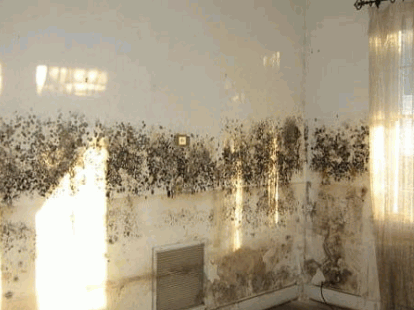
Regular property maintenance can go a long way in preventing damp issues. Ensure that gutters and downspouts are clean and free from debris to allow proper drainage. Check for any cracks or gaps in external walls and seal them to prevent water ingress.
Keep an eye on plumbing systems for leaks and promptly fix any issues. Proper maintenance can help reduce the risk of dampness and potentially costly repairs.
When considering this work, it's beneficial to seek quotes from multiple reputable damp proofing specialists. Comparing quotes allows you to get a sense of the average costs and find a balance between affordability and quality.
However, keep in mind that the cheapest option may not always provide the best long-term solution, so consider the expertise and reputation of the professionals as well.
Not all damp issues require extensive damp proofing treatments. Depending on the specific type and extent of the damp problem, targeted solutions may be sufficient. For example, improving ventilation, addressing insulation issues, or fixing minor leaks can effectively resolve some cases of dampness without the need for costly treatments.
Consulting with a professional can help determine the most appropriate and cost-effective solution for your specific situation.
While it may be tempting to attempt DIY damp proofing to save money, it's essential to exercise caution. Effective proofing requires expertise and professional knowledge to ensure effective results, so it's often best to rely on a professional damp proofer. Inadequate DIY attempts can lead to ineffective treatments or even exacerbate the problem, resulting in higher costs in the long run.
Proper ventilation and insulation can help prevent condensation and reduce the risk of dampness. Ensure that rooms are adequately ventilated by using extractor fans, opening windows, or installing ventilation systems where necessary.
This work sometimes involves additional costs beyond the core damp treatment itself. These costs can arise from the need to address damages or make improvements to restore the affected areas. Here are some common additional costs associated with damp proofing:
After proofing, it is often necessary to repaint and redecorate the affected areas to restore their appearance and protect them from future moisture damage. There is specialist damp proof paint, and as you'd expect, damp proof paint can increase the overall proofing cost. You can also check out our post "Can You Paint Over Damp Proof Paint" for more additional insights.
Painting and decorating costs can vary depending on factors such as the size of the area, the type of paint or wallpaper used, and any necessary preparation work such as filling cracks or smoothing surfaces.
As with all labour costs, prices in the damp proofing industry vary, so always request quotes when reviewing damp proofing prices.
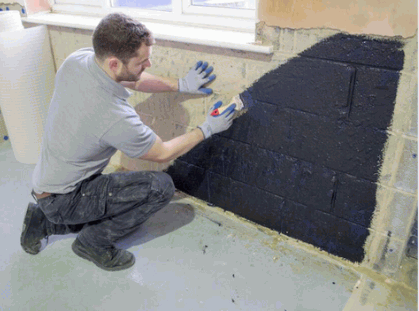
If rising damp has caused damage to flooring materials such as carpets, laminate, or wooden floorboards, replacing the flooring may be necessary.
In cases where dampness has led to significant structural damage, it may be necessary to replace damaged floor joists. Floor joists provide support and stability to the floor structure.
The cost of replacing floor joists can vary depending on the extent of the damage, the size and accessibility of the affected area, and the type of material used for the replacement.
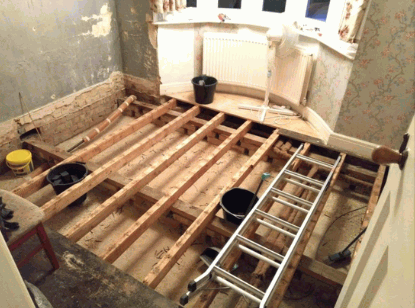
Dampness can cause plaster to deteriorate, resulting in peeling, crumbling, or damaged walls. In such cases, re-plastering or skimming the affected areas may be required to restore the integrity and aesthetics of the walls. Our post "How Soon Can You Plaster After Damp Proofing" maybe interest you. You can check it out.

External walls affected by dampness may require rendering to repair or replace damaged render. Rendering involves applying a protective layer to the exterior walls, enhancing their resistance to moisture ingress.
During the damp treatment process, it may be necessary to temporarily move furniture to facilitate the work and protect it from potential damage.
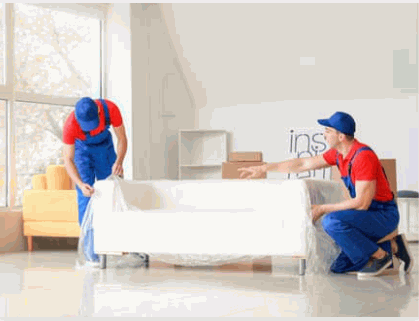
Yes, damp proofing can add value to a home. By addressing and resolving damp issues, the property's structural integrity, and overall condition are improved. This work enhances the appeal and desirability of the property for potential buyers or renters.
It provides assurance that the property is protected against moisture-related problems, such as mould growth or decay. Additionally, having a damp-free home reduces the risk of future costly repairs and maintenance, and can help you avoid structural problems. There are many types of damp, but no matter the type of damp, if left unchecked, it can ruin your whole house.
Leaving damp untreated leads to damp-related appearance issues, and if you have a rising damp problem, it can affect the whole house. Whether you have a semi-detached house, terraced house or flat, damp proofing jobs offer value.
Ultimately, this work contributes to a higher market value and increased buyer confidence in the property.
Proofing your house is recommended to prevent moisture-related issues and protect your property. Damp proofing measures, such as installing damp proof courses or improving ventilation, help prevent moisture ingress and control damp levels.
By addressing damp issues promptly, you can maintain a healthier living environment, protect the structural integrity of your home, and potentially avoid costly repairs in the future.
No matter the problem, knowing what you face with damp proofing costs helps you make the best decision when you damp proof your property. Whether you need a damp proof course or measures which remove condensation, the overall damp proofing cost is a significant matter to consider. Damp problems treated professionally improve your home and life.
At DryCore, we want you to understand the most likely damp proofing cost for your property, and if you have any questions, please contact us today before you damp proof your home.